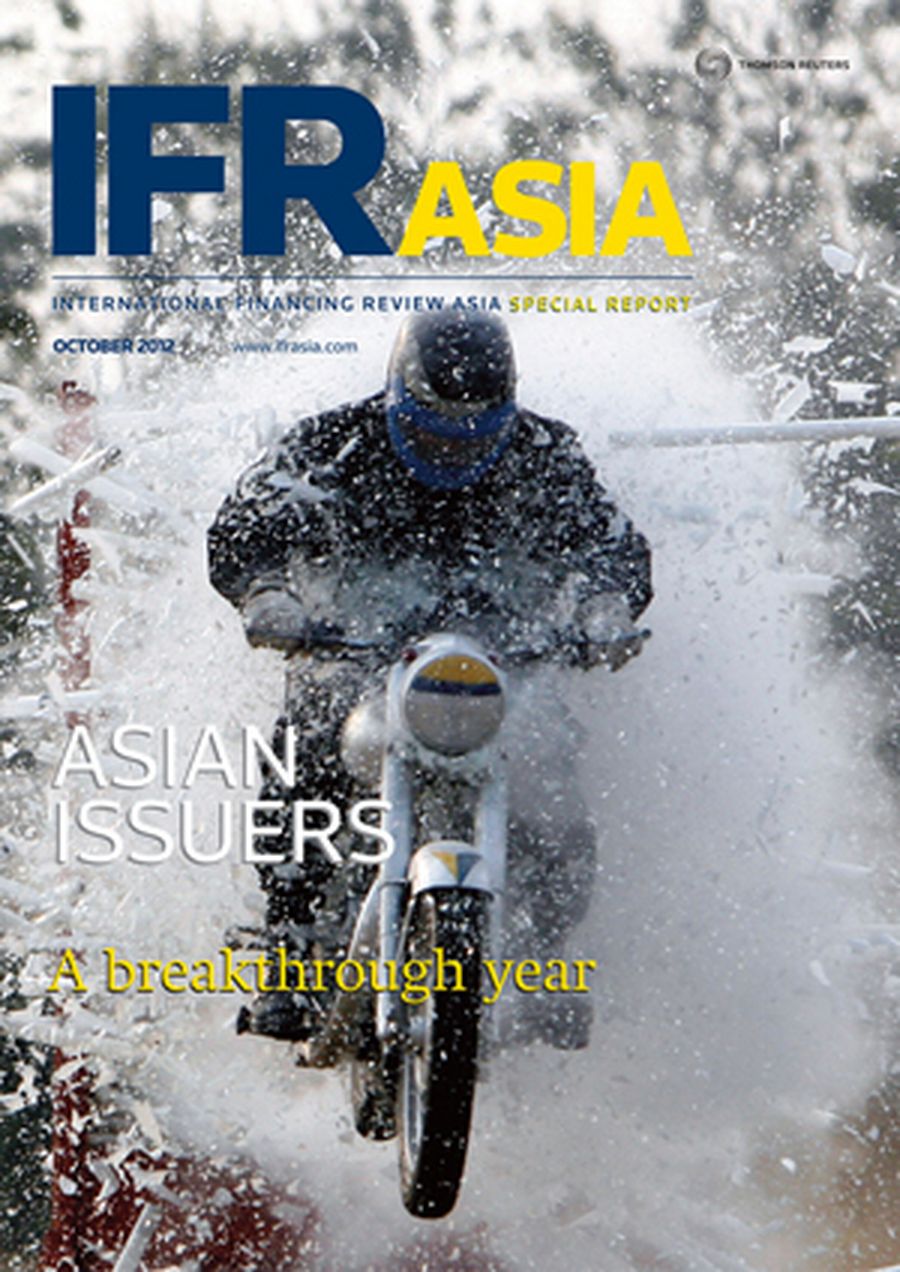
Source: Reuters/Rupak De Chowdhuri
An Indian Army soldier jumps through fluorescent tubes on a motorcycle during an exhibition show at Binnaguri cantonment
Over the past year or so, the high-level view of Asia’s funding markets would have revealed an alarming split. The debt capital markets are enjoying a breakthrough year, with international bond sales from the region running at an all-time high and companies locking in ever-lower interest rates. However, a lack of confidence in global economic growth has ravaged equity financing. Companies have been forced to shelve countless attempted listings, and bankers’ jobs are at risk.
That black-and-white picture, however, does not tell the full story. Just as plenty of companies have successfully issued new equity, the driving forces behind the bond markets also may not be as solid as they first seem.
It is certainly true that the bond markets are enjoying a remarkable year as a result of extraordinarily low interest rates in the world’s major funding currencies. Asian treasurers have taken full advantage, across both the public and private sectors, sending US-dollar bond sales from Asia, excluding Japan and Australasia, to an annual record of over US$100bn with three months of the year still to run.
However, it is not clear if the trend will – or indeed can – continue. A big part of that rush to market has stemmed from the arrival of private banking clients, fed up with losing money on their equity investments and looking for a safer income stream. Those orders have been multiplied by cheap leverage, handed out by banks that would rather lend against shares than into the real economy, and are inherently susceptible to a sudden reversal in risk appetite.
The inevitable uptick in Treasury rates could easily trigger margin calls, while a recovery in equities would divert attention elsewhere. In either case, the orders that have allowed many high-risk borrowers to come to market in 2012 would quickly evaporate.
Other investors may have rushed into more exotic products, such as perpetuals, either without a full understanding of the risks, or based on the assumption that Treasuries will still be low when the call option comes around – in five years’ time.
The vast majority of the US$100bn-odd Asian that companies raised this year has been in the high investment-grade or sovereign sectors, where the outlook for rates rather than appetite for credit risk drives investments. Only recently have a handful of lower-rated companies been able to enjoy the same kind of access to capital. Funding costs are still high and investors remain extremely selective.
On the other side of the coin, the demise of the equity capital markets has been grossly exaggerated. IPOs in North Asia remain extremely challenging, thanks to an uncertain outlook on Chinese economic growth, but numerous South-East Asian deals have performed well.
Malaysia has emerged as a bright spot for equity financing, and the additional liquidity injected into the market over the past 12 months bodes well for the future. Singapore, too, can boast a number of popular listings, and has carved a well-defined niche for itself in welcoming business trusts – a structure that suits a more conservative, income-driven investor base.
This report aims to highlight some of the companies that have impressed across both the debt and equity markets. Some have epitomised the key trends that have defined the year, while others have found ways to succeed where others have failed.
These experiences show that – as ever in Asia – there may be more to the full story than meets the eye. The black-and-white image of the region’s capital markets needs a bit of colour.
To see the digital version of this report, please click here.
